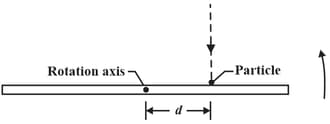During a jump to his partner, an aerialist is to make a quadruple somersault lasting a time . For the first and the last quarter-revolution, he is in the extended orientation shown in the below figure, with rotational inertia around his center of mass (the dot). During the rest of the flight, he is in a tight tuck, with rotational inertia . What must be his angular speed around his center of mass during the tuck?
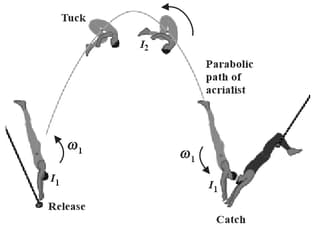


Important Questions on Rolling, Torque, and Angular Momentum
A uniform solid sphere rolls down an incline. (a) What must be the incline angle if the linear acceleration of the center of the sphere is to have a magnitude of ? (b) If a frictionless block were to slide down the incline at that angle, would its acceleration magnitude be more than, less than, or equal to ? Why?
(b) How long does it take to reach the end of the string? As it reaches the end of the string, what are its (c) linear speed (d) translational kinetic energy,
(e) rotational kinetic energy and (f) angular speed?
In the figure shown below, a child stands on the edge of a stationary merry-go-round of radius . The rotational inertia of the merry-go-round about its rotation axis is . The child catches a ball of mass thrown by a friend. Just before the ball is caught, it has a horizontal velocity of magnitude at an angle with a line tangent to the outer edge of the merry-go-round, as shown. What is the angular speed of the merry-go-round just after the ball is caught?
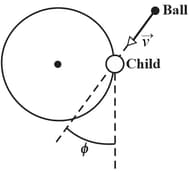
A ballerina begins a tour jeté with angular speed and a rotational inertia consisting of two parts: for her leg extended outward at an angle of to her body and for the rest of her body (primarily her trunk). Near her maximum height, she holds both legs at an angle of to her body and has an angular speed of . Assuming that has not changed, what is the ratio of ?
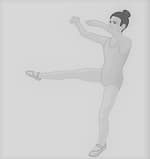
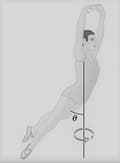
Two balls are attached to the ends of a thin rod of length and negligible mass. The rod is free to rotate in a vertical plane without friction about a horizontal axis through its center. With the rod initially horizontal (Figure), a wad of wet putty drops onto one of the balls. Hitting it with a speed of and then sticking to it. (a) What is the angular speed of the system just after the putty wad hits? (b) What is the ratio of the kinetic energy of the system after the collision and that of the putty wad just before? (c) Through what angle will the system rotate before it momentarily stops?

In the figure shown below, a small block slides down a frictionless surface through height and then sticks to a uniform rod of mass and length . The rod pivots about point through an angle before momentarily stopping. Find .
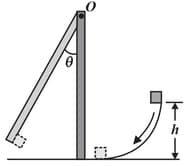
The figure is an overhead view of a thin uniform rod of length and mass rotating horizontally at counter clockwise about an axis through its center. A particle of mass and traveling horizontally at speed hits the rod and sticks. The particle's path is perpendicular to the rod at the instant of the hit, at a distance from the rod's center. (a) At what value of are the rod and the particle stationary after the hit? (b) In which direction does the rod and the particle rotate if is greater than this value?
